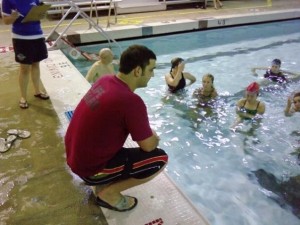Near drowning is a close to death experience due to suffocation under water. It is the last phase before actual drowning takes place which often leads to death. Victims of near drowning would require immediate medical attention in order to prevent complications. Majority of victims require supplementary medical care and most are young children but it can happen to anyone.
Always remember that it is still possible to revive an individual who has been underwater for an extended period. A higher chance of resuscitation is possible if the victim is young or was submerged in very cold water.
Causes of near drowning
Almost all cases of near drowning are linked to events that occur close or in the water. The common causes of near drowning include:
- Alarm while in the water
- Inability to swim or not skilled to swim
- Falling into thin ice
- Children who are left unattended near water
- Consumption of alcohol while on a boat or swimming
- Attempt on suicide
- Seizure or concussion while in the water
Symptoms of near drowning
When it comes to near drowning, there is a high likelihood that the victim is already unresponsive. Even though this can occur in cases of near drowning, there are certain symptoms that can manifest.
- Chest pain
- Enlargement of the abdomen
- Cold or bluish-colored skin
- Cough
- Vomiting
- Absence of breathing
- Unconsciousness
Treatment for near drowning
It is a known fact that near drowning usually occurs if there is no lifeguard present in swimming pools or beaches. It is also possible to rescue the victim from the water, but only do so if it is safe. It is recommended to use throw ropes and life rings to help the victim. Nevertheless, if the victim is already unresponsive, he/she could not grab any objects. This is the time that you have to consider entering the water only if you have good swimming skills to complete the task.

It is also important to perform rescue breathing right away in case the breathing of the victim has stopped. CPR involves delivering oxygen to the victim via mouth-to-mouth. The chest compressions are also vital since they increase the flow of oxygen via the blood to prevent any complications.
Just bear in mind that you have to be very careful when handling the victim as well as performing CPR since there is a possibility of either a neck or spinal injury. Avoid moving or turning the neck of the victim. Immobilize and stabilize the neck by securing it on a firm board or simply position towels around the neck for support.
In case the individual has fallen into cold water, remove the wet clothing and wrap the victim with a warm blanket to prevent hypothermia from setting in. Immediately call 911 before performing rescue or CPR. Understandably, learning how to perform CPR can save a life. It is best to learn CPR from first aid courses or watch a training video.